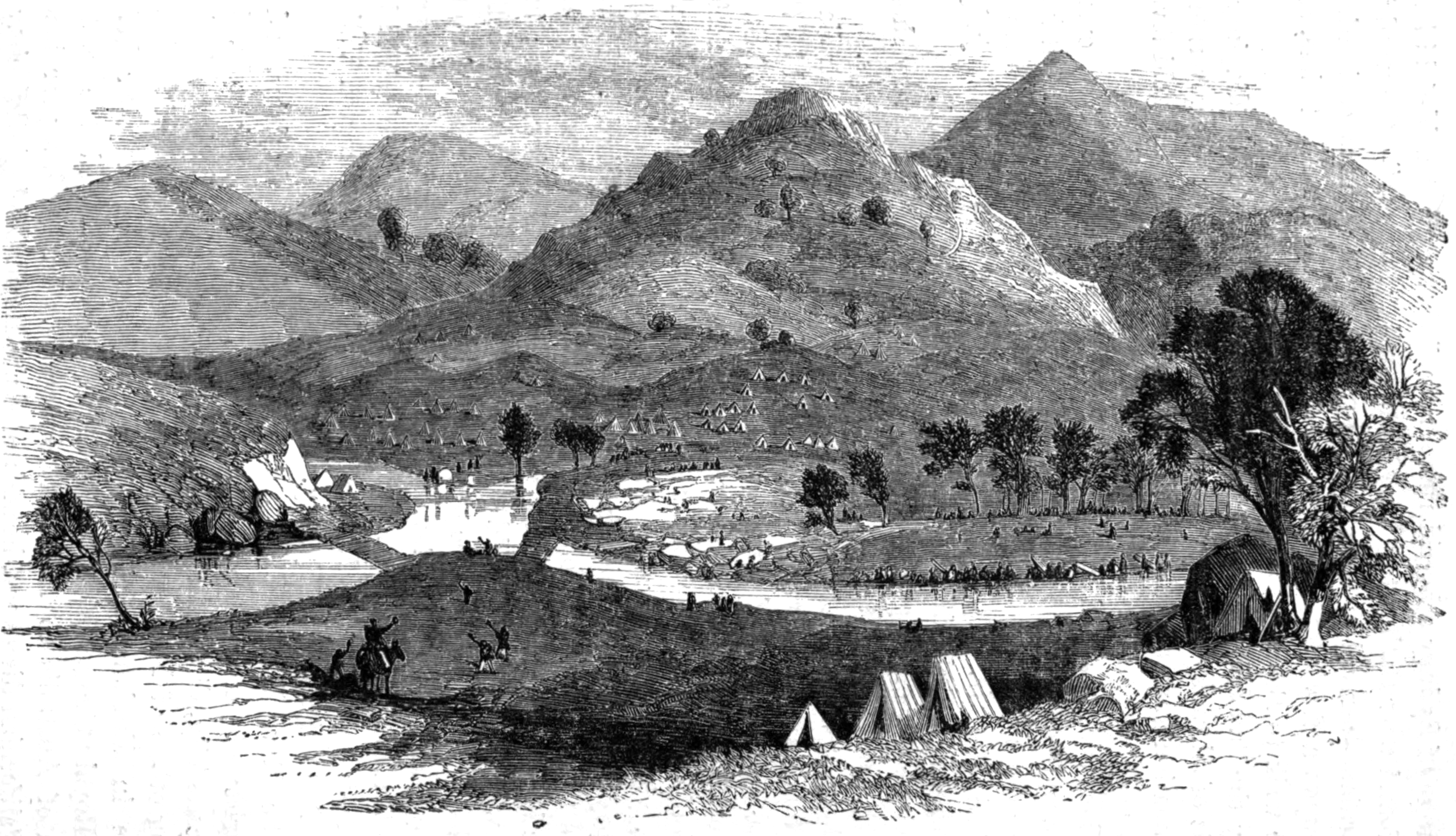Ophir, New South Wales on:
[Wikipedia]
[Google]
[Amazon]
Ophir is the name of a locality in
 Ophir is located near the
Ophir is located near the
Map of the Town of Ophir (Wellington County)
{{authority control Ghost towns in New South Wales Towns in New South Wales Towns in the Central West (New South Wales) Cabonne Council
New South Wales
New South Wales (commonly abbreviated as NSW) is a States and territories of Australia, state on the Eastern states of Australia, east coast of :Australia. It borders Queensland to the north, Victoria (state), Victoria to the south, and South ...
, Australia, in Cabonne Shire.
History and discovery
 Ophir is located near the
Ophir is located near the Macquarie River
The Macquarie River or Wambuul is part of the Macquarie–Barwon River (New South Wales), Barwon catchment within the Murray–Darling basin, is one of the main inland rivers in New South Wales, Australia.
The river rises in the central highl ...
northeast of the city of Orange. Ophir is the place where gold
Gold is a chemical element; it has chemical symbol Au (from Latin ) and atomic number 79. In its pure form, it is a brightness, bright, slightly orange-yellow, dense, soft, malleable, and ductile metal. Chemically, gold is a transition metal ...
was first discovered in New South Wales
New South Wales (commonly abbreviated as NSW) is a States and territories of Australia, state on the Eastern states of Australia, east coast of :Australia. It borders Queensland to the north, Victoria (state), Victoria to the south, and South ...
in 1851, leading to the Australian gold rushes
During the Australian gold rushes, starting in 1851, significant numbers of workers moved from elsewhere in History of Australia, Australia and overseas to where gold had been discovered. Gold had been found several times before, but the Colo ...
. In popular literature it has been stated that William Tom Jr, John Lister and Edward Hargraves
Edward Hammond Hargraves (7 October 1816 – 29 October 1891) was an Australian gold prospector who led an expedition in the Macquarie River region of New South Wales in 1851, and publicised the resulting finds, starting the New South Wales ...
found payable gold in February 1851 at the "Ophir gold diggings" located at the confluence of Summer Hill Creek and Lewis Ponds Creek (). Hargraves was awarded £10,500 (worth $1,125,434 in 2004 values) by the NSW Government.
William Tom's father (Parson Tom) named the area "Ophir" after a region in the Old Testament noted for its fine gold.
There was a gold rush to the area in 1851 and 1852. The village of Ophir was laid out in 1851 by Major Sir Thomas Livingstone Mitchell and its first lots were sold in 1852. Reef gold was discovered in 1868 by Joseph Christopherson.
Although Hargraves was honoured and rewarded, it may have been the mineralogist William Tipple Smith who first discovered gold at what would be later named Ophir, in 1848. On 27 February 1852 William Tipple Smith wrote to geologist Sir Roderick Murchison
Sir Roderick Impey Murchison, 1st Baronet (19 February 1792 – 22 October 1871) was a Scottish geologist who served as director-general of the British Geological Survey from 1855 until his death in 1871. He is noted for investigating and desc ...
in England saying the spot now called Ophir was the very spot where he had found nugget gold in 1848. Smith's claims and correspondence are exhaustively studied in a 1986 book, ''A Fool's Gold?'', by Lynette Ramsay Silver, in the foreword of which geology professor David Branagan of Sydney University concurs and states "It is good to see him deservedly remembered in the pages of this book." William Tipple Smith was one of the owners of the Fitzroy Iron Works at Mittagong and, during a visit in February 1849, Governor Charles Augustus FitzRoy
Lieutenant-Colonel Sir Charles Augustus FitzRoy, (10 June 179616 February 1858) was a British Army officer, politician and colonial administrator who held governorships in several British colonies during the 19th century.
Family and peerage ...
was presented with a steel knife "mounted with colonial gold".
Some remnants of old alluvial, reef, and deep lead mines, are located within the Ophir Reserve, which includes the former site of the town. The town's cemetery also remains. There is an obelisk that commemorates the discovery of payable gold, in 1851, giving credit to Edward Hargraves, John Lister, James Tom, and William Tom.
All that remains of William Tipple Smith is one small gold sample and a previously unmarked grave (number 4929, section 4, Rookwood Cemetery) that was only recently provided with a headstone recognising him as the discoverer of the first payable gold in Australia.
See also
*Australian gold rushes
During the Australian gold rushes, starting in 1851, significant numbers of workers moved from elsewhere in History of Australia, Australia and overseas to where gold had been discovered. Gold had been found several times before, but the Colo ...
* New South Wales gold rush
New South Wales experienced the first gold rush in Australia, a period generally accepted to lie between 1851 and 1880. This period in the history of New South Wales resulted in a rapid growth in the population and significant boost to the ec ...
* Edward Hargraves
Edward Hammond Hargraves (7 October 1816 – 29 October 1891) was an Australian gold prospector who led an expedition in the Macquarie River region of New South Wales in 1851, and publicised the resulting finds, starting the New South Wales ...
* Hargraves, New South Wales
* Hargraves House, Noraville
References
External links
Map of the Town of Ophir (Wellington County)
{{authority control Ghost towns in New South Wales Towns in New South Wales Towns in the Central West (New South Wales) Cabonne Council